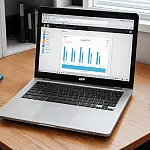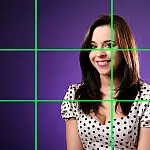Graphic Design Tutorial for Beginners - What is Graphic Design?Graphic design is all around us, wherever we look. We take a look at what graphic design is and how to get started as a graphic designer.
This article is part of a series of articles. Please use the links below to navigate between the articles.
- Graphic Design Tutorial for Beginners - What is Graphic Design?
- Graphic Design Elements & Principles Every Designer Should Know
- Colour Theory for Graphic Designers - Tips and Inspiration
- Typography for Beginners - Everything You Wanted to Know
- Adobe Photoshop for Beginners - Learn How to Use Photoshop
- How to Create Web Designs in Photoshop - PSD Templates
- Introduction to Adobe Illustrator for Graphic Designs
- Tracing Artwork in Adobe Illustrator Using Pen Tools
- How to Create Effective Logo Designs with Examples
- An Introduction to Graphic Design with Adobe InDesign
- Introduction to the Printing Process - From Digital to Print
Graphic design is the art of visual communication that combines images, words and ideas to convey information to an audience in a way that is pleasing to the eye and gets attention.
Graphic design is all around us, wherever we look. The most common forms include Logos, Websites, Advertisements, and Magazine/Newspaper layouts, however, the list is endless.

A graphic designer aims to create something pleasing to the eye, gets attention and conveys a message. It is not however about making things look cool, it has to work! Poor graphic design includes being too cluttered, illegible fonts, unusable interfaces and worst of all the wrong message.
Design is thinking made visibleSaul Bass
Successful graphic designers have fun whilst using creativity and are at the cutting edge of technology. They are patient, pay attention to detail and like solving problems.
Contrary to popular thought, you don't need to be good at drawing or spend years in college or spend lots of money on expensive equipment. You do however need to build a good portfolio, learn visual thinking skills and speak the lingo.
There are many different types of graphic designers, from creative directors to brand developers, web designers to film developers, and logo designers to visual journalists.
Tools of the Graphic Design Trade
Adobe creative suite is the industry standard software for design. The three main pieces of software are Adobe Photoshop, Adobe Illustrator and Adobe InDesign.
Adobe Photoshop
Adobe Photoshop is the benchmark in the world of professional digital image solutions. It is a powerful photo and image editing application. It is not, however, a drawing program. The power of Photoshop is in working with existing images. Typical tasks include image touch-up and manipulation, compositing, converting to different formats and printing.
Photoshop is primarily a bitmap editing tool, that is it works with tiny blocks of colour which form images.

Adobe Illustrator
Adobe Illustrator is a vector-based drawing and graphic design tool. Illustrator works by generating curved paths (called Bezier curves) connected with anchor points. Shapes, anchor points and other information are stored as part of the file and can be modified at any time.
Vector images are quite different to bitmap images in that they can be resized without any loss of quality. These attributes are what make vector-based programs different to bitmap-based programs that only store individual pixels.

Adobe InDesign
Adobe InDesign is for page design and layouts for print and digital publishing. InDesign is ideal for newspapers and magazines, posters, brochures, cover art etc... InDesign is also used for digital publishing such as PDFs, eBooks or interactive documents. InDesign can also convert conventional media to digital.
In the next tutorial series, we will look at each application in more detail as well as learn some of the basic functions and create our first graphic designs.










